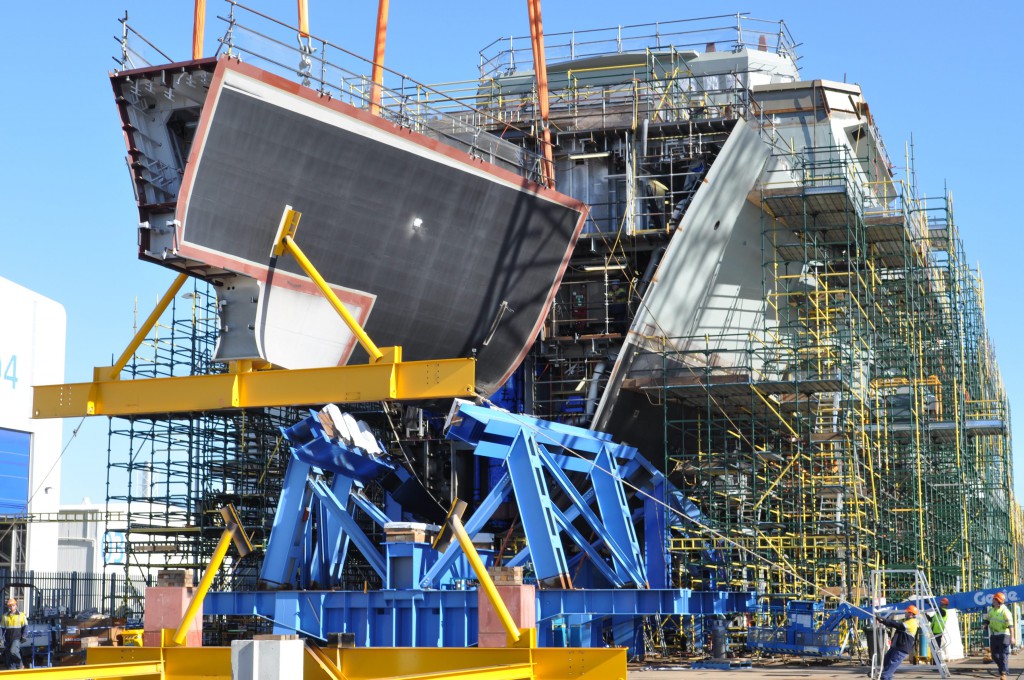 Back in June, I was asked to speak at a workshop in Ottawa on defence reform, alongside presenters from the United States and United Kingdom. It was a great opportunity to catch up on what’s been happening elsewhere (more on that later) and also to think about recent and future reform here in Australia.
Back in June, I was asked to speak at a workshop in Ottawa on defence reform, alongside presenters from the United States and United Kingdom. It was a great opportunity to catch up on what’s been happening elsewhere (more on that later) and also to think about recent and future reform here in Australia.
On the surface, there was a lot for me to talk about. In 2009, Defence commenced a decade-long Strategic Reform Program (SRP) with the aim of saving around $20 billion, and in recent years we’ve seen a number of cultural and organisational reforms emerge from the avalanche of reviews initiated under Minister Smith. A rich agenda indeed.
But there was a problem. I’ve long been a harsh critical of the SRP for exaggerating the scale of savings. For those with patience for such things, I detailed my objections in the annual ASPI Defence Budget Brief between 2009 and 2012. As tempting as it was to show off my forensic accounting skills by demonstrating that the SRP delivered less than it claimed, that would hardly be useful for an audience looking for new ideas about defence efficiency.
With nothing to lose, I turned to Defence for help. I asked DMO and Defence Support Group (DSG), what they’d been doing that would be worth sharing with an international audience. The responses I received were encouraging and, I must admit, somewhat embarrassing. Encouraging because there are some genuinely innovative and valuable reforms underway; embarrassing because I was less aware of them than I should’ve been. So let me get the mea culpa out of the way. While I stand by my criticism of the SRP for exaggerating the scale of savings, it was remiss of me not to properly research and fully report on the good work being done on the ground.
Hopefully it’s not too late to make amends. I prepared a short paper for the Ottawa workshop telling the story of defence reform in Australia highlighting the good work presently underway. Two developments stand out.
First, Defence’s shared services business model is being bedded down by fully consolidating functions such as financial services, simple procurement, personnel services, garrison support and information technology. By doing so, the efficiencies due to economies of scale and standardisation of service levels sought by the 1997 re-organisation of Defence are finally being realised. Crucially, care’s being taken to tailor support to the Services and other internal customers in line with the nature of activity being undertaken.
Second, DMO is doing a great job of generating efficiencies in materiel sustainment by bringing together their military customers and industry supplies. Examples include the Hawk Lead-in-Fighter and Jindalee Over-The-Horizon-Radar support contracts. The key has been to work with the Services to better understand costs and capability outcomes so that demand can be prudently moderated. This stands in stark contrast to the hands-off approach of a couple of years ago uncovered by the Rizzo Review of amphibious and afloat support ship repair and management.
As laudable as these and other reforms are, they’re not going to close the gap between extant plans for the ADF and promised funding. So there’ll almost certainly be a renewed push for further savings in the years ahead, especially given the deteriorating fiscal situation. And, if the experiences of our great and powerful allies (past and present) are any indication, we may not have seen anything yet.
In the UK, the Ministry of Defence is undergoing a fundamental re-organisation following external reviews in 2009 and 2011. Planned cuts to the civilian workforce amount to 32,000 positions (40%), with still further reductions now likely. Things are hardly less dramatic in the US. In a 31 July speech, Secretary of Defense Chuck Hagel announced a 20% across the board cut to all major headquarters, including the Office of the Secretary of Defense, the Joint Staff, the four Service Headquarters and nine Unified Component Commands. In addition, a raft of ‘compensation-related reforms’ are being considered, including cuts to retirement health care, reduced housing and overseas living allowances, and limiting military and civilian pay increases.
The depth of the efficiencies in the US and UK exceeds anything we’ve seen in Australia since at least the 1997 Defence Reform Program. But that’s hardly surprising; while we’ve been largely insulated from the worst of the financial crisis, the chill winds of austerity have already forced substantial cuts to the scale of US and UK armed forces. In comparison, cuts to the defence budget in Australia haven’t so far resulted in the loss of a single military position or the cancellation of any major acquisition.
But, given the underfunding inherent in the 2013 Defence White Paper, the current situation is unsustainable. The financial crisis is finally catching up with us. Sooner or later, the next government will face a choice between providing more money, sacrificing military capability or cutting administrative overheads. No prize for guessing where they’ll begin.
Mark Thomson is senior analyst for defence economics at ASPI. Image courtesy of Department of Defence.

